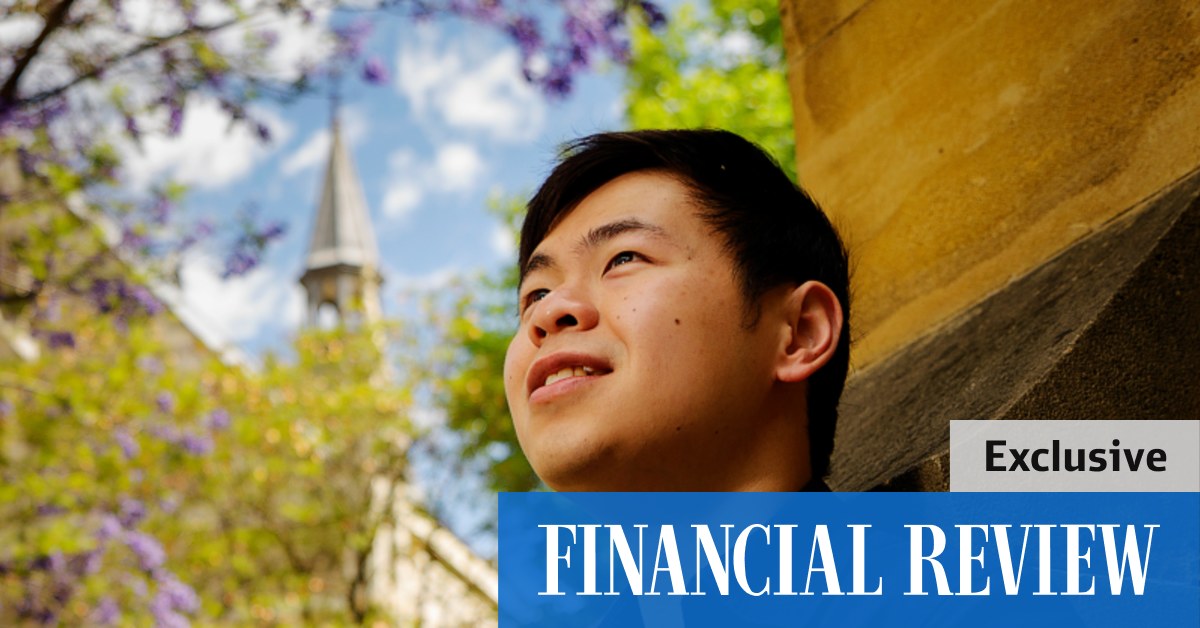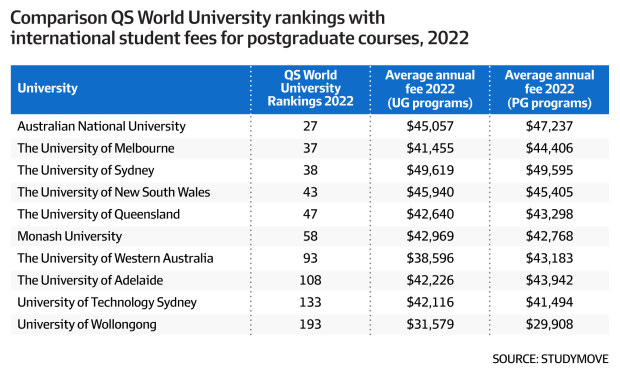
“Now that CPI is expected to finish in at around 8-9 per cent by the end of the year, I doubt universities will match it. Increases of between 3-4 per cent are more likely,” Mr Ramirez said.
Studymove reviewed 3942 bachelor degree programs offered at 40 Australian universities in 2022 and 2387 masters programs. It found the average annual fee for an undergraduate program was $34,920 and for postgraduate it was $35,879.
The range in prices was $49,619 a year for the most costly bachelor’s program and $49,595 for a master’s, while the cheapest were $25,575 and $23,936 respectively.
Mr Ramirez’s analysis also reveals a powerful correlation between highly ranked universities and high fees, although for universities in the middle the price-quality differential is less clear.
The University of Sydney, which rates third on the QS World University Ranking, has the highest fees, and the added attractions of location and reputation. At the other end of the spectrum, the University of the Sunshine Coast, which is ranked between 1001-1400 globally, charges the lowest fees of $25,775 for bachelors and $27,800 for masters.
For international students looking for a bargain, the well-ranked University of Wollongong, at number 10, charges fees well below those above it and immediately below it at $38,958 for bachelors and $28,908 for masters.
Oscar Ong, president of the Council of International Students of Australia, said that because international student fees are not regulated, universities can charge whatever they can get away with.
“It makes Australia really expensive, which is why we have been calling on universities to provider a better student experience,” Mr Ong said.
Annual surveys put the self-reported quality of the educational experience of international students at between four and seven percentage points behind domestic students.
Mr Ramirez said universities needed to very clear and transparent in communicating fee increases to students, especially while they are being pinched by rising interest rates on the loans they took out to study here and cost of living expenses.
“International students are quite vulnerable. With interest rates rising, there will be a double hit on their finances,” he said.
When Yeganeh Soltanpour, 23, was researching where to study, course fees were an important factor in her decision, but not the only criteria.
Of Iranian descent, but born and raised in Dubai, Ms Soltanpour arrived in Adelaide in 2017 where she spent a year in a pathways program, moved into a bachelor’s degree in psychology at the University of Adelaide, then shifted to Flinders University for her honours year and is now back at Adelaide where she is enrolled in an MBA.
She said the relative importance of fees varied depending on whether a student was more motivated by the qualification or the institution from which it was gained.
“I know of several cases where students look very actively towards the quality of the course and aren’t so much concerned by the fees,” Ms Soltanpour said.
“I know, for example, that Flinders University has a much cheaper MBA program compared to Adelaide. But I chose Adelaide because it was more established and the quality was better.”
The fact that Adelaide University was ranked in the top eight in Australia and world top 100 also played a key part.
The federal government’s recent decision to extend the rights of international students to stay and work for an additional two years if their degree was in an area of skill shortage was a step in the right direction, Mr Ong said.
“But there also needs to be more work put into work-integrated learning to ensure that international students are trained the same as Australian students and are equally prepared for the jobs market.”

